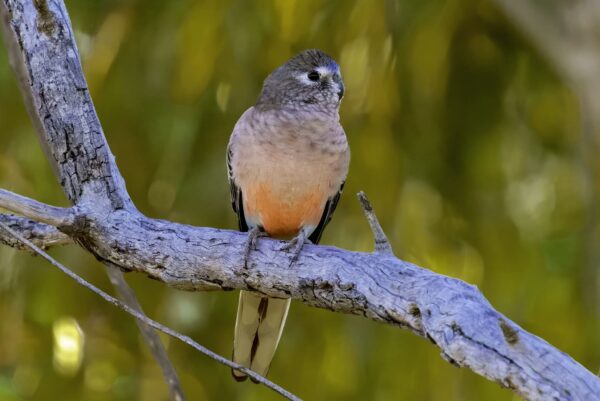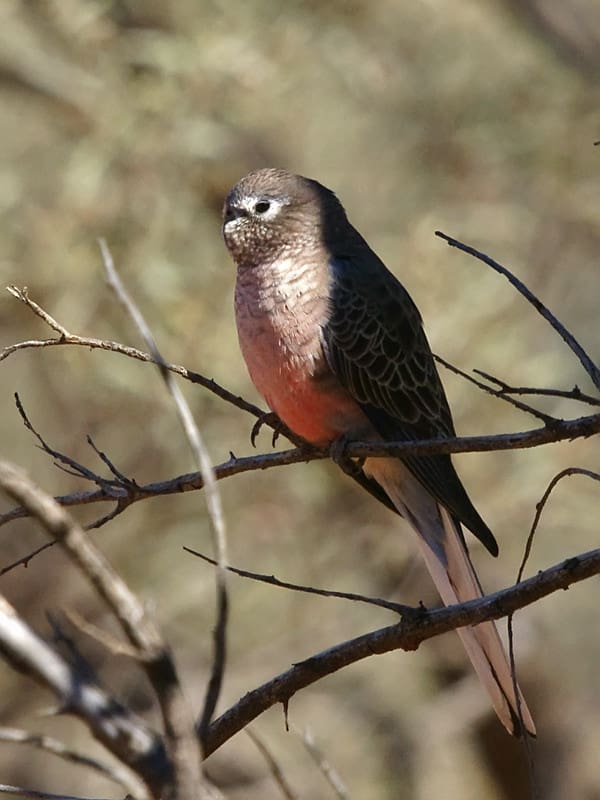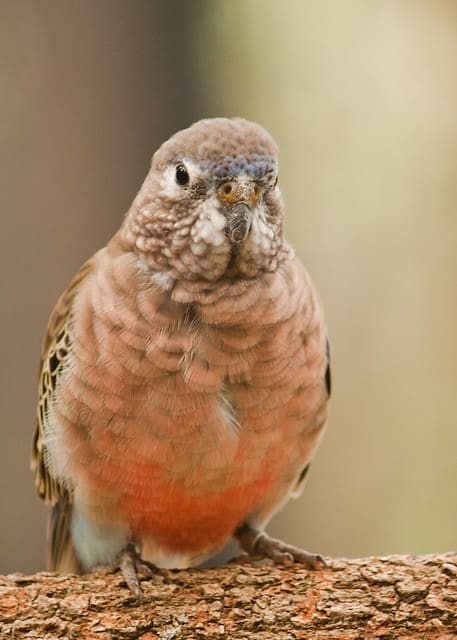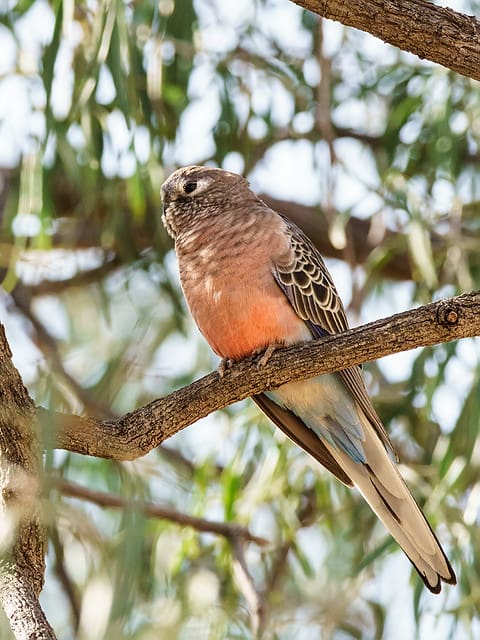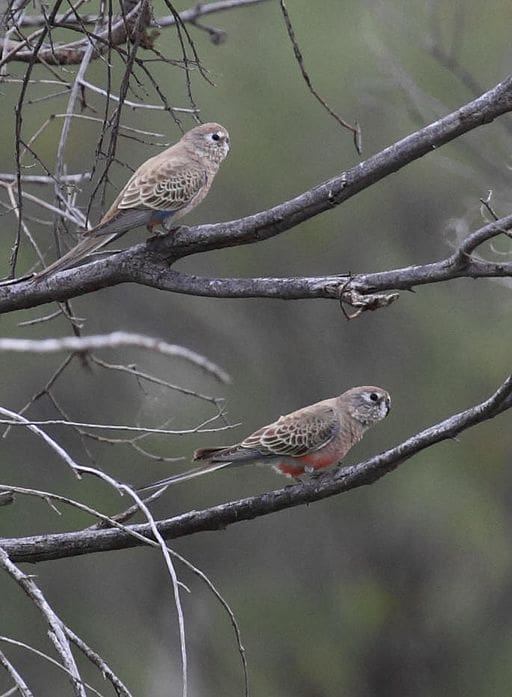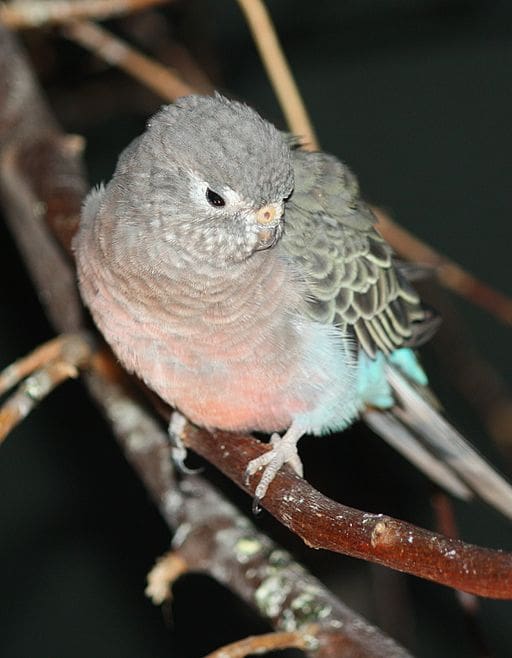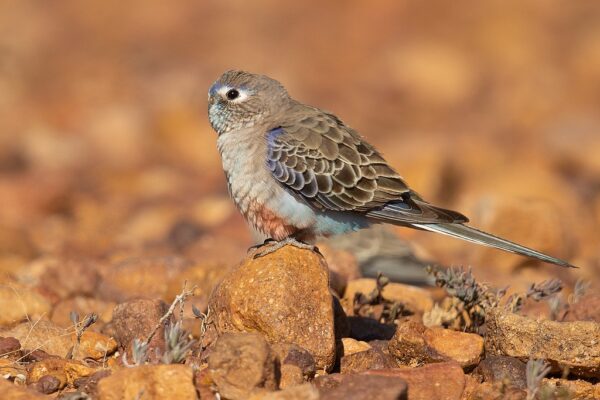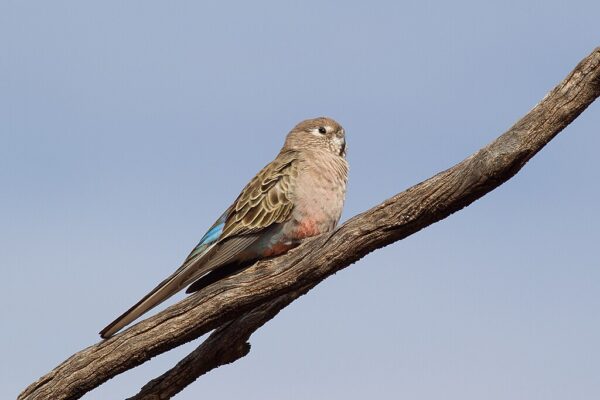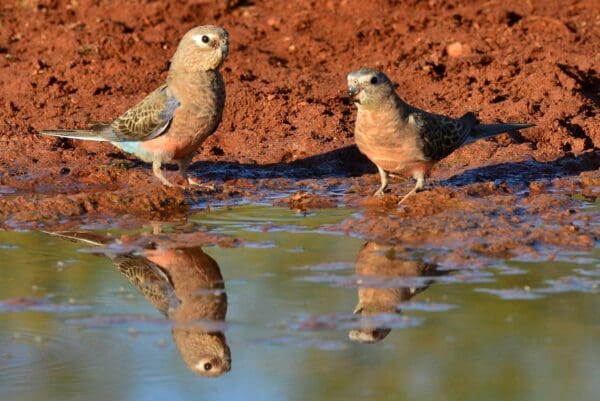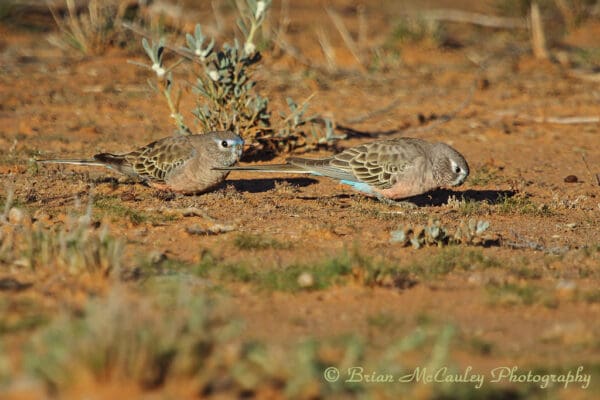Bourke’s Parrot
Also known as:
Bourke's Grass-Parakeet, Pink-bellied Parakeet, Blue-vented Parakeet, Sundown Parrot, Night Parrot
Also known as:
Bourke's Grass-Parakeet, Pink-bellied Parakeet, Blue-vented Parakeet, Sundown Parrot, Night Parrot
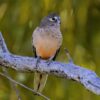
![© David Cook [CC BY-NC 2.0] via Flickr A wild Bourke's Parrot perches on a thin branch](https://parrots.org/wp-content/uploads/2023/01/wpt_Bourkes-Parrot_1211-17-100x100.jpg)
![© Daniela Parra [CC BY-NC 2.0] via Flickr A wild male Bourke's Parrot perches on a branch](https://parrots.org/wp-content/uploads/2023/01/wpt_Bourkes-Parrot_1211-14-100x100.jpg)
![© David Cook [CC BY-NC 2.0] via Flickr A wild male Bourke's Parrot perches on a branch](https://parrots.org/wp-content/uploads/2023/01/wpt_Bourkes-Parrot_1211-13-100x100.jpg)
![© Christopher Watson [CC BY-SA 3.0] via Wikimedia Commons Wild Bourke's Parrots perch in a bare tree](https://parrots.org/wp-content/uploads/2023/01/wpt_Bourkes-Parrot_1211-7-100x100.jpg)
![© Christopher Watson [CC BY-SA 3.0] via Wikimedia Commons A wild Bourke's Parrot hides amongst rocks and grasses](https://parrots.org/wp-content/uploads/2023/01/wpt_Bourkes-Parrot_1211-5-100x100.jpg)
![© Ltshears (Own work) [CC BY-SA 3.0 or GFDL] via Wikimedia Commons A female Bourke's Parrot perches on a branch](https://parrots.org/wp-content/uploads/2023/01/wpt_Bourkes-Parrot_1211-1-100x100.jpg)

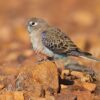
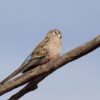
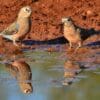
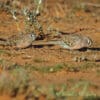
DID YOU KNOW?
This species derives its name from Sir Richard Bourke, Governor of New South Wales from 1831 to 1837.

Neopsephotus

bourkii
Size:
19 cm (7.5 in)
Weight:
40-50 g
Subspecies including nominate:
one
Colour Adult:
Male-upperparts olive/brown; blue forehead; line above eyes blue; face grey/white; grey/pink throat and lower cheeks, upper cheeks olive/brown; grey/brown breast with grey/pink wide edging; rose/pink abdomen; blue tail coverts and rump; dark brown upper wing coverts and outer secondary feathers, margined with yellow/white; underwing band minimal or absent; black/brown tail with wide tip. Beak grey. Eye dark brown. Female-in general duller than male with paler pink underparts and paler blue sides of rump; blue on forehead and above eyes absent or minimal; has pale underwing band.
Colour Juvenile:
As in adult female but duller with pale underwing band which is less pronounced in male juvenile.
Call:
Calls made in flight are mellow notes or plaintive warblings. Calls are softer and higher pitched than that of the Budgerigar, whose calls are similar.
More Information:
Content Sources:
CITES
BirdLife International
Cornell Lab of Ornithology/Birds of the World
Parrots: A Guide to Parrots of the World, Juniper and Parr, 1998
Parrots of the World, Forshaw and Cooper, 1977. 2010 edition
Parrots of the World, Forshaw, 2006.
Parrots in Aviculture, Low, 1992.
Lexicon of Parrots, Thomas Arndt.
Captive Status:
Common
Longevity:
12 yrs
Housing:
Walk-in enclosure, minimum length 2.1 m (6.9 ft) or indoor suspended aviary minimum length 1.8m (6 ft).
Diet:
Small seed mix such as: canary, millet and smaller amounts of oats, buckwheat, safflower and hemp; limited sunflower seed; millet spray; green leaves such as: Swiss chard, lettuce, sowthistle, dandelion, chickweed; seeding grasses; rearing foods made from hard-boiled egg, wholegrain bread and carrot, all ground up and mixed to crumbly consistency; fruit such as: apple, pear, banana, grapes, pomegranate, cactus fruits; complete kibble.
Enrichment:
Provide safe seeding grasses if possible, branches for climbing, areas for bathing.
Nest Box Size:
10″ x 10″ x 16″ (25.4 cm x 25.4 cm x 40.6 cm) vertical box.
Clutch Size:
4-5
Fledging Age:
30 days
Hatch Weight:
—
Peak Weight:
—
Weaning Weight:
—
World Population:
Unknown but described as fairly common, increasing.
IUCN Red List Status:
Least Concern
CITES Listing:
Appendix II
Threat Summary:
Not globally threatened. Fairly common and apparently increasing, likely due to the introduction of stock-watering installations. Also possibly due to a reduction in sheep numbers or a change in ground vegetation to herbs.
Range:
Found in the interior of central and southern Australia in two restricted populations.
Habitat:
Occur in drier inland areas preferring open mulga Acacia aneura and Eucalyptus woodland. Also seen in riverine woodland and Callitris scrub.
Wild Diet:
Eats grass seeds, particularly wind grass, grass and herb shoots and seeds of Acacia, Bassia and Cassia.
Ecology and Behaviour:
Is nomadic; will arrive in an area and remain there for a few years before disappearing completely. Up to a thousand birds may be seen during at watering holes during dry spells. Are rapid fliers, travelling low through scrub to visit watering areas. Are quiet and shy while resting in pairs or flocks in vegetation.
Clutch and Egg Size:
4-5 rounded eggs, 20.0 x 16.5 mm (0.8 x 0.6 in)
Breeding Season:
August-December; nest is in tree cavity.
